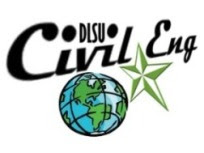The
2015 International Environmental
Engineering Conference (IEEC 2015) with the theme of “Creative Technologies for Environments”, organized by the Korean
Society of Environmental Engineers (KSEE), was held last October 28 to 30, 2015
at Busan Exhibition and Convention Center (BEXCO), Busan, South Korea.
Five
(5) ERDT scholars from two engineering schools in the Philippines, namely De La
Salle University – Taft, Manila and Mapua Institute of Technology – Intramuros,
Manila, participated in the conference. Two papers authored by DLSU alumni were
presented during the parallel sessions.
Jeffrey Tepace, BSMS CIV-CTM, and adviser Engr.
Ronaldo Gallardo’s research entitled “Evaluation
of Properties of Pervious Concrete with Fly Ash and Bottom Ash” was
included in the session encompassing talks on Water Resources/Quality Control
and Watershed Management – Occurrence and Treatment of Microorganisms (Session
04). The said research studied the effects of using fly ash as cement
substitute in different percentages and bottom ash as total substitute for sand
as fine aggregates on the different hydraulic and mechanical properties of a
modified pervious concrete aimed to be used as part of a low-cost water
filtration system for poor communities in the Philippines.
 |
| Miller Cutora |
On the other hand, the paper entitled “The Assessment of
Partially Saturated Copper Mine Tailing Upon Inundation” was presented by Miller
Cutora, BSMS CIV-STE, co-authored with his adviser Dr. Mary Ann Adajar, on the session
discussing novel materials and processes for waste reuse and recycle (Session
11). The
said research assessed the hydrocompression behavior (response of particle
thereupon sudden inundation) of copper mine tailing, a waste material from
mining industry, when used as structural fill or embankment material in order
to utilize the waste resource. It is evaluated with varying moisture content,
relative density, and overburden stresses.
- Article by Miller Cutora



.jpg)





No comments:
Post a Comment